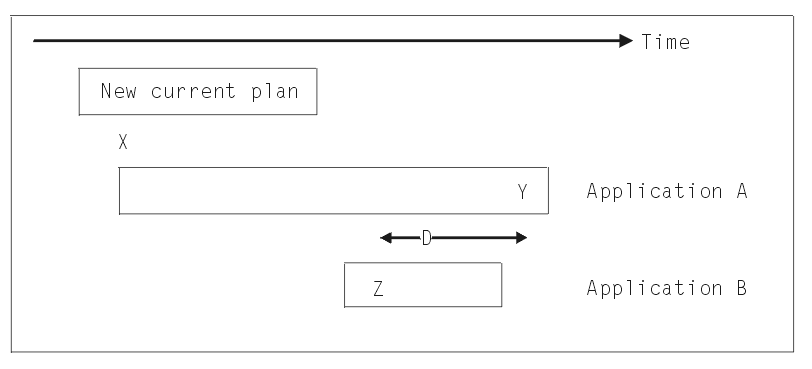Pending occurrences
If an operation in an occurrence has an external predecessor, the dependency is resolved when the long-term plan is created or extended. That is, the link is established between the two dependent occurrences.
Although the dependency has been resolved in the long-term plan, it can sometimes happen that the successor of a dependency relationship is included in the current plan but the predecessor is not. This can occur, for example, when a dependency is added manually to the long-term plan. To ensure that the dependency is honored, HCL Workload Automation for Z creates a dummy occurrence in the current plan, called a pending occurrence. The successor operation is temporarily made dependent on this pending occurrence. When the true predecessor of the operation is included in the current plan, the pending occurrence is replaced.
In Example of a missing predecessor, the application A is included in the new current plan because its input arrival time X falls within the period of the current plan. So the operation Y is also in the current plan. Operation Y has a predecessor Z in application B (dependency D), but application B is not in the current plan, because its input arrival time is later. So Y has a predecessor Z that is not in the current plan, and a pending occurrence is created in the current plan until application B is included.
